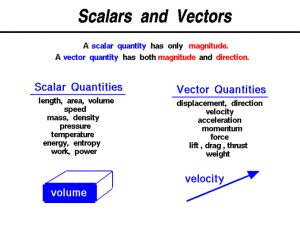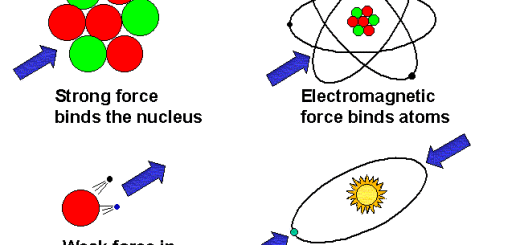Types of scalar physical quantity & vector physical quantity
The physical quantity is any quantity that can be determined and has a unit of measurement in our life, each physical quantity is measured in a special measurement unit, such as the mass, the time, the speed, the energy, and the velocity.
Physical quantities
The physical quantity is divided into the scalar physical quantity and the vector physical quantity. The scalar physical quantity is the physical quantity that has magnitude only and has no direction, to describe the scalar physical quantity, It is enough to know its magnitude only by giving its numeric and its measuring unit, such as we say the body mass equals 10 kilograms.
The length and time are scalar physical quantities because they have magnitude only and have no direction. All the scalars are subject to the algebraic mathematical operations related to the numbers and especially they are added and subtracted if they have the same measurement units.
The vector physical quantity is the physical quantity that has the magnitude and the direction, to describe the vector physical quantity, It is necessary to know its magnitude (its numeric value and measuring unit) and also its direction. The acceleration and the force are the vector quantities because they have the magnitude and direction.
All the vectors are subject to the mathematical operations called the vectors algebra, The vectors have great importance in different fields of physics, applied science like the engineering. Understanding various physical phenomena such as the gravity, the movement of liquids and the geometrical establishments depends basically on the main properties of vectors.
Distance and displacement
The displacement is the length of the shortest straight line between two positions (the primary position and the final position), It is determined by the magnitude and the direction, It is a vector quantity, It is measured by meter or kilometer.
The distance is the actual length of the path that of a moving object covers from the start point to the endpoint, It is determined by a magnitude only, It is a scalar quantity, It is measured by meter or kilometer.
The displacement equals the distance (numerically) when the object moves in a direct straight line in one direction, The two equal displacements have the same magnitude and the same direction.
The direction is determined from the starting point of the movement towards the final point, The displacement equals zero when the start point is the endpoint.
The velocity and speed
The velocity is the rate of change of displacement, or it is the displacement covered in one second (unit time), The velocity is a vector quantity, and to determine it accurately, It is necessary to identify its magnitude and direction.
The predator (Cheetah) is one of the fastest wild animals, its speed is about 27 m/s, but if we want to represent its velocity, we say that its velocity is 27 m/s is a certain direction, we say that the cheetah’s velocity equals 27 m/s in the west direction.
The velocity is the speed in a given direction when the body moves in a straight line in one direction, The velocity is measured by meter/second or kilometer /hour.
The speed is the distance covered in a unit time, It is determined by a magnitude only, It is a scalar quantity, It is measured by meter/second or kilometer /hour.
The acceleration
The acceleration is the change of an object’s speed in one second, we use the acceleration unit (m/s²) when the distance is measured in meter and the time is measured in seconds or (km/h²) when the distance is measured in kilometer and the time is measured in hours.
When a car covers equal distances at equal periods of time, It is said that the object moves with uniform speed but its speed changes (decreasing or increasing) by equal values at equal periods of time, it is said that it moves by uniform (regular) acceleration.
Uniform acceleration is the change (increase or decrease) of the object’s speed by equal values through equal periods of time.
When the car’s speed increases by time (its initial speed < its final speed), the movement is described as the accelerating motion or positive acceleration.
When the car’s speed decreases by time (its initial speed > its final speed), the movement is described as decelerating motion or negative acceleration.
Static objects, Moving objects, Types of Motion and Velocity
Uniform Acceleration and Non-uniform Acceleration
Safety skills, Applications of motion with uniform acceleration (Freefall & Projectiles)
Scalar Quantities, Vector Quantities & Finding resultant of two perpendicular forces
Types of speed & Factors necessary for the description of motion














